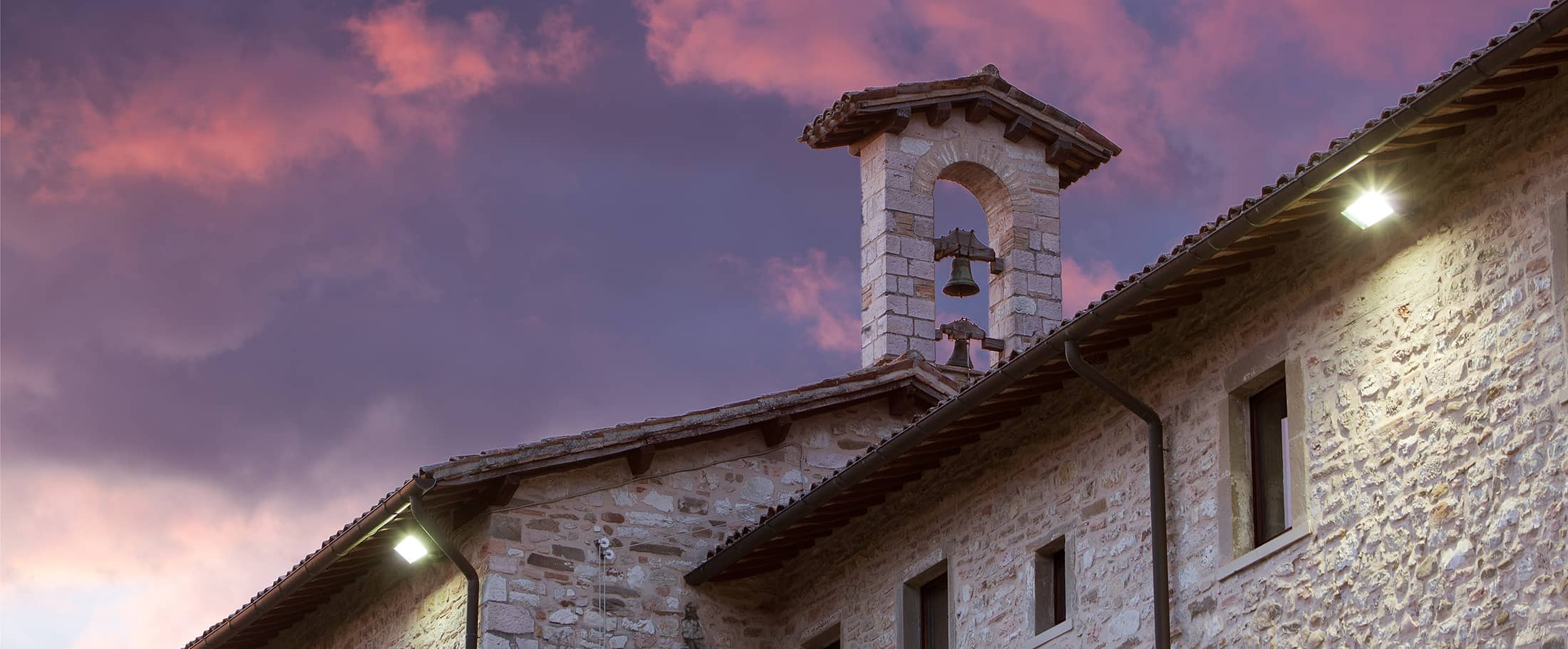History of the Monastery
The first stone in the construction of the church, dedicated to San Nicola of Bari – was laid in 1631 by the Bishop of Gubbio, Ulderico da Carpegna, who soon after was to be named Cardinal by Pope Urbano VIII. Today a stone inscription in memory of this event, can be seen beside the entrance ‘Sala Capogrossi’, just as the historian Oderisi Lucarelli testified.
A short time after the first stone was laid, the Apostolic Mayor Giovanni Bernardini Buttelli, bought land on behalf of the Holy See from the Vittoria sisters, Lucrezia and Agreppina Negri di Gubbio. The deed was dated the 8th of October 1634, and registered by the Notary Guido Vagnozzi. This made possible the construction of a cloister, and soon after work on the monastery was begun. Finally, on the 16th of February 1640, after great fatigue and many difficulties, 22 Capuccini friars took possession of the new convent.
Fifteen years later, on the 31st of May 1655, the Bishop of the Diocese, Mons.
Averardo Sperelli, consecrated the church of the monastery to the Conception of the Virgin Mary.
In the year 1866 the new Italian Government declared the suppression of all religious orders and the sale of ecclesiastic estates, forcing the Cappuccini friars to abandon their beloved Convent. The property then passed to the Town Council of Gubbio and in 1878 became the seat of an agrarian school. At the end of the 19th century, the Council gave up the property and the monastery was little by little abandoned reduced to a stone pit, providing stones to the citizens of Gubbio with which to restore their houses.
In the 1960’s two architects, Monaco e Luccichenti, began work on their reconstruction project to transform the convent into a first class hotel.
The inauguration of the Hotel took place on the 6th of August, 1966. the original architectural style was perfectly preserved, as were most of the frescos of Capogrossi and the mineral water spring on the premises. In 1987 the Hotel was taken over by Gruppo Financo, which undertook its complete reconstruction. The new complex was inaugurated in 1990 on occasion of the World Football Cup hosted by Italy, in the presence of the Brazilian National team. This was an important investment which gave prestige to the city and acted as a driving force for the development of tourism in the territory.
Today the Park Hotel ai Cappuccini, immersed in its peaceful park and surrounded by the friars’ ancient vegetable gardens such as the “arometo”, gives tourists in search of rest and quiet the opportunity to re-live the story and spirituality of this beautiful environment.

